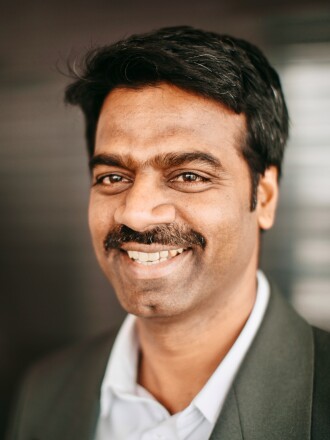
Credit: South Dakota
Gottumukkala started as CIO in September 2024 after serving as the state’s second-ever chief technology officer. His vision for South Dakota IT centered on innovation through the adoption of emerging technologies, while increasing efficiency by replacing outdated legacy systems.
“What I’m most proud of is how we have brought a sense of shared purpose across the state government when it comes to technology,” the CIO said.
One example has been a culture shift regarding statewide data governance strategy. In recent months, a workshop enabled various agencies to come together and align their data modernization goals.
Gottumukkala led several modernization initiatives during his time at the state, focused on both financial systems and public-facing services. The importance of strategic alignment has become evident throughout this work, he said.
Support from Gov. Larry Rhoden has been vital for South Dakota’s innovation culture, Gottumukkala emphasized. The governor has championed the importance of IT work, empowering the CIO to push for system modernization and cybersecurity improvements.
“He didn’t just support our efforts behind the scenes; he put the full weight of his office behind technology as a strategic priority,” the CIO said.
BIT has also backfilled open positions with mission-focused talent and culture as priorities, rather than focusing solely on resumés. The culture of this team is the foundation for the state’s other technology achievements, he said.
One such achievement is the February launch of the new title and vehicle registration system, 605Drive, from the Department of Revenue’s Motor Vehicle Division. Months of rigorous testing made this project successful, he said.
Another business transformation process that is underway in the state is Project BISON. This initiative has been developing since the tenure of former CIO Jeff Clines. It is expected to transform how state government manages finance, human resources, and procurement, Gottumukkala said.
Other noteworthy initiatives include the Beneficiary Eligibility and Enrollment System project, the Broadband Equity, Access and Deployment Challenge Process Portal, and laying the foundation for the state ID verification system.
“What ties all of these together is Gov. Rhoden’s belief that technology should make government more accessible, secure and efficient,” Gottumukkala said, explaining that each of these projects provides public service improvements for citizens.
Under Gottumukkala, South Dakota has moved to identify vulnerabilities more proactively. The state has banned employee use of DeepSeek and RedNote, to protect state information from threats posed by foreign-based artificial intelligence platforms. The state has also increased internal use of cloud-based platforms for key systems. Despite having a relatively small population, Gottumukkala said South Dakota has been able to act with the urgency and foresight of a larger state to advance his AI, cyber risk, and modernization priorities.
Cybersecurity has also been a key priority for Gottumukkala, whose next role will be as the deputy director of the Cybersecurity and Infrastructure Security Agency within the U.S. Department of Homeland Security.
“State government gives you a front-row seat to complexity,” Gottumukkala said. “You’re constantly balancing innovation, compliance, cybersecurity, and most importantly, budget constraints.”
He will take several lessons learned as state CIO to the federal role, he said. During his time with South Dakota, he said he has seen the critical nature of working together across agencies to align goals and implement best practices. The culture and team powering an entity’s technology work is “everything,” he underlined; the support of executive leadership is also critical. And, he said, fiscal discipline and creativity go hand in hand. There are ways, he said, to create savings without compromising service.
The reason Gottumukkala came to state government is the ability to make a difference and now, he said, he is focused on using his expertise to do that at the federal level. The state has not yet appointed its next CIO, but Gottumukkala said officials have received many resumés that are now under review.
His advice for the next state CIO, Gottumukkala said, is to work closely with state agencies, as their buy-in is critical to the success of IT initiatives. Cybersecurity, he added, should remain at the front and center of the next CIO’s work, to address evolving IT threats.
“I think that the next CIO will definitely inherit a strong foundation, and it’s up to them to build the future.”















